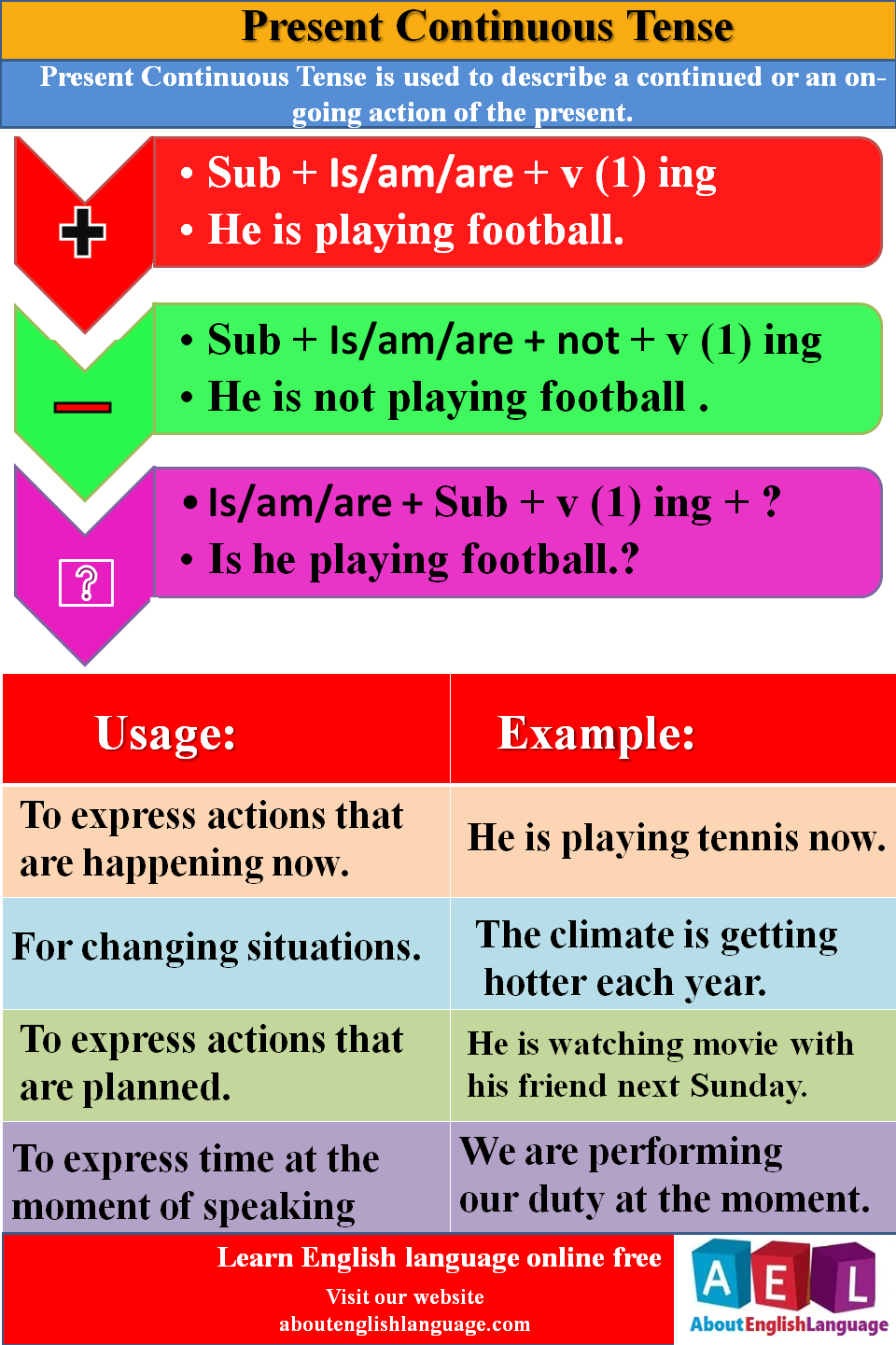The Present Progressive or Present Continuous tense describes the actions happening in the present moment. the Present Progressive is used to express actions that take place at the time of speaking.
Present Progressive Tense uses:
Present Progressive tense can be used for different situations.
- The action takes place at this moment
I am going to school. (I’m going to school right now.) - Temporary actions
You are going home now. - Planned action in the future
We are going to Canada this weekend. - Actions that happen now (longer period of time)
He is watching movie.
Formation of the Present Progressive
The Present Progressive is formed from a form of “to be” + infinitive + with the ending “ing”.
to be ( am , are , is ) + Infinitive + ing
Examples of present continuous tense:
Affirmative sentences:
| Subject | auxilary verb | verb+ing | object |
| I | am | playing | cricket. |
| We /you/they | are | playing | cricket. |
| He/she/it | is | playing | cricket |
Negative sentences:
| Subject | auxilary verb + not | verb+ing | object |
| I | am not | playing | cricket. |
| We /you/they | are not | playing | cricket. |
| He/she/it | is not | playing | cricket |
Interrogative sentences:
| auxilary verb | Sub | verb + ing | object + ? |
| Am | I | playing | cricket? |
| Are | We /you/they | playing | cricket? |
| Is | He/she/it | playing | cricket? |
Sometimes it can be difficult to find the right tense – confusion between Simple Present and Present Progressive is possible. So-called signal words help to quickly identify the intention of the statement and know whether the Present Progressive must be used. Signal words in this tense have a clear temporal relation.
Signal words in Present Progressive/ continuous tense
- at the moment
- now
- never
- tomorrow
- tonight
- in the morning
- this weekend
- next year
More Examples of sentences in the Present Progressive
For easier understanding, there are some examples of the formation of affirmative, negative, and interrogative sentences. Statements can be used orally and in writing as a short form.
Uses of present Continuous:ل
1: The Present Continuous is used for the action happening at the moment of speaking.
Example:
I am teaching. You are studying.
Please be quiet! Qasam is studying.
I can not pass the phone to Ali. He is writing some ting.
2: The Present Continuous expresses that something is planned, intended or agreed. In this case, the Present Continuous is used in the futuristic sense. This use must be clearly understood from the relationship or of a time.
Example:
I am planing to visit the United States this year.
My brother is coming tomorrow from Ireland..
3: We use the Present Continuous for changing situations.
Example:
Your English speaking skill is getting better.
Important:
The Present Continuous is usually formed by adding-ing to the verb.
Example:
work – I am work ing
sing – I sing ing on
play – he is play ing
However, there are three exceptions to this rule:
When the final letter to the sequence of consonant + stressed vowel + consonant, the final consonant is doubled!
Example:
run r = u = Stressed vowel consonant consonant n =
run – I am ru nn ing
other verbs:
stop – he is sto pp ing
travel – she is traveling ll ing
begin – we are begi nn ing
The verb ends in a vowel + consonant + e, the e is removed at the end.
Example:
come – They are coming
The verb ends in-ie-ie that is transformed into a y.
Example:
l ie – I am l y ing
T he – he is d y ing

Other present Tenses

